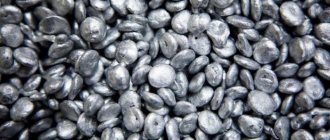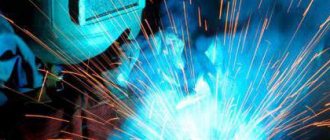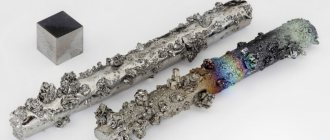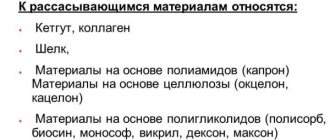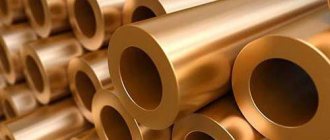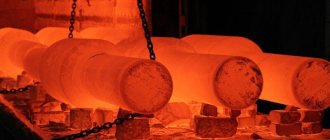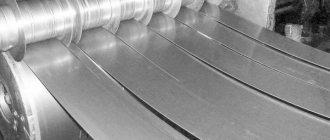TYPES OF INSTRUMENTAL MATERIALS AND AREAS OF THEIR APPLICATION
Carbon and alloy tool steels. The range of instrumental materials is varied. , carbon tool steels of grades U7, U7A...U13, U13A began to be used for the manufacture of cutting tools In addition to iron and carbon, these steels contain 0.2...0.4% manganese. Tools made of carbon steels have sufficient hardness at room temperature, but their heat resistance is low, since at relatively low temperatures (200...250 °C) their hardness sharply decreases.
Alloyed tool steels in their chemical composition differ from carbon steels in the increased content of silicon or manganese, or the presence of one or more alloying elements: chromium (increases the hardness, strength, corrosion resistance of the material, reduces its ductility); nickel (increases strength, ductility, impact strength, hardenability of the material); tungsten (increases the hardness and heat resistance of the material); vanadium (increases the hardness and strength of the material, promotes the formation of a fine-grained structure); cobalt (increases the impact strength and heat resistance of the material); molybdenum (increases elasticity, strength, heat resistance of the material). For cutting tools, low-alloy steels of grades 9ХФ, 11ХФ, 13Х, В2Ф, ХВ4, ХВСГ, ХВГ, 9ХС, etc. are used. These steels have higher technological properties—better hardenability and hardenability, less tendency to warp, but their heat resistance is almost equal to the heat resistance of carbon steels. steels 350...400 °C and therefore they are used for the manufacture of hand tools (reamers) or tools intended for processing on machines with low cutting speeds (small drills, reamers).
High-speed tool steels. From the group of high-alloy steels, high-speed steels with a high content of tungsten, molybdenum, cobalt, and vanadium are used for the manufacture of cutting tools. Modern high-speed steels can be divided into three groups.
Steels of normal heat resistance include tungsten R18, R12, R9 and tungsten-molybdenum R6M5, R6MZ, R8MZ (Table 6.1). These steels have a hardness in the hardened state of 63...66 HRSe, a bending strength of 2900...3400 MPa, an impact strength of 2.7...4.8 J/m2 and a heat resistance of 600...650 °C. These steel grades are most widely used in the manufacture of cutting tools. They are used in the processing of structural steels, cast irons, non-ferrous metals, and plastics. Sometimes high-speed steels are used, additionally alloyed with nitrogen (P6AM5, P18A, etc.), which are modifications of conventional high-speed steels. Alloying with nitrogen increases the cutting properties of the tool by 20...30%, hardness - by 1...2 HRSe units.
Steels with increased heat resistance are characterized by a high carbon content - 10Р8МЗ, 10Р6М5; vanadium - R12FZ, R2MZF8, R9F5; cobalt - R18F2K5, R6M5K5, R9K5, R9K10, R9M4K8F, 10R6M5F2K8, etc.
The hardness of steels in the hardened state reaches 66...70 HRSe, they have higher heat resistance (up to 620...670 °C). This makes it possible to use them for processing heat-resistant and stainless steels and alloys, as well as high-strength and hardened structural steels. The service life of tools made from such steels is 3...5 times higher than from steels R18, R6M5.
Table 3. Content of alloying elements in high-speed steels, %
High heat resistance steels are characterized by a low carbon content, but a very large amount of alloying elements - Bl1M7K23, V14M7K25, ZV20K20Kh4F. They have a hardness of 69...70 HRCE, and a heat resistance of 700...720 °C. The most rational area of their use is cutting difficult-to-cut materials and titanium alloys. In the latter case, the service life of tools is 30...80 times higher than that of steel R18, and 8...15 times higher than that of hard alloy VK8. When cutting structural steels and cast irons, the service life increases less significantly (3...8 times).
Due to the acute shortage of tungsten in the USSR and abroad, tungsten-free tool materials, including high-speed steels, are being developed.
These steels include low-tungsten steels R2M5 and RZMZF4K5. R2MZF8, A11RZMZF2 and tungsten-free 11M5F (see Table 6.1). The performance properties of these steels are close to the properties of traditional high-speed steels of the corresponding groups.
A promising direction in improving the quality of high-speed steels is their production by powder metallurgy methods. Steels R6M5K5-P (P - powder), R9M4K8-P, R12MZFZK10-P and others have a very uniform fine-grained structure, are well ground, are less deformed during heat treatment, and are characterized by stable performance properties. The service life of cutting tools made from such steels increases up to 1.5 times. Along with powder high-speed steels, so-called carbide steels have proven themselves well,
containing up to 20% TiC, which, in terms of performance characteristics, occupy an intermediate place between high-speed steels and hard alloys.
Hard alloys. These alloys are produced by powder metallurgy in the form of plates or crowns. The main components of such alloys are tungsten carbides WC, titanium TiC, tantalum TaC and niobium NbC, the smallest particles of which are connected through relatively soft and less refractory cobalt or nickel mixed with molybdenum (Tables 6.2, 6.3).
Hard alloys have high hardness -88... 92 HRA (72...76 HRCE) and heat resistance up to 850... 1000 °C. This allows you to work at cutting speeds 3...4 times higher than with tools made of high-speed steels.
Currently used hard alloys are divided into:
1) for tungsten alloys of the VK group: VKZ, VKZ-M, VK4, VK6, VK6-M, VK6-OM, VK8, etc. In the symbol, the number shows the percentage of cobalt. For example, the designation VK8 indicates that it contains 8% cobalt and 92% tungsten carbides. The letters M and OM indicate fine-grained and especially fine-grained structure;
2) for titanium-tungsten alloys of the TK group:
T5K10, T15K6, T14K8, TZOK4, T60K6, etc. In the symbol, the number after the letter T shows the percentage of titanium carbides, after the letter K - cobalt, the rest - tungsten carbides;
Table 4. Brands, chemical composition and properties of tungsten-containing hard alloys
Table 5. Brands, chemical composition and properties of tungsten-free hard alloys
3) for titanium-tantalum-tungsten alloys of the TTK group: TT7K12, TT8K6, TT20K9, etc. In the symbol, the numbers after the letter T show the percentage of titanium and tantalum carbides, after the letter K - cobalt, the rest - tungsten carbides;
4) for tungsten-free hard alloys TM-1, TM-3, TN-20, KNT-16, TS20KhN, the composition of which is given in table. 6.3. The designations of this group of hard alloys are conventional.
Carbide grades are produced in the form of standardized inserts that are soldered, glued or mechanically attached to structural steel holders. Tools are also produced, the working part of which is entirely made of hard alloy (monolithic).
The correct choice of carbide grade ensures efficient operation of cutting tools. For a specific processing case, the alloy is selected based on the optimal combination of its heat resistance and strength. For example, TK group alloys have higher heat resistance than VK alloys. Tools made from these alloys can be used at high cutting speeds, which is why they are widely used in the machining of steels.
Tools made from hard alloys of the VK group are used when processing parts made of structural steels under conditions of low rigidity of the AIDS system, during intermittent cutting, when working with impacts, as well as when processing brittle materials such as cast iron, which is due to the increased strength of this group of hard alloys and low temperatures in cutting zone.
Such alloys are also used in the processing of parts made of high-strength, heat-resistant and stainless steels, titanium alloys. This is explained by the fact that the presence of titanium in most of these materials causes increased adhesion to TK group alloys, which also contain titanium. In addition, alloys of the TK group have significantly worse thermal conductivity and lower strength than VK alloys.
The introduction of tantalum carbides or tantalum and niobium carbides (TT10K8-B) into the hard alloy increases its strength. Therefore, three- and four-carbide carbide alloys are used to equip tools that work with impacts and on contaminated crusts. However, the heat resistance temperature of these alloys is lower than that of dicarbide alloys. Of the hard alloys with a significantly improved structure, specially fine-grained ones should be noted, used for processing materials with high abrasive ability. OM alloys have a dense, particularly fine-grained structure, and also have a small (up to 0.5 μm) grain size of tungsten carbides. The latter circumstance allows tools made from them to be sharpened and finished with the smallest radii of cutting edges. Tools made from alloys of this group are used for finishing and semi-finishing of parts made of high-strength ductile steels with an increased tendency to work hardening.
A slight addition of tantalum and cobalt carbide to the alloys of the OM group helps to increase their heat resistance, which makes it possible to use these alloys in the manufacture of tools intended for roughing parts made of various steels. Replacing tantalum carbides with chromium . This ensures the production of alloys with a fine-grained, uniform structure and high wear resistance. A representative of such materials is the VK10-XOM .
Alloys with a low percentage of cobalt (TZOK4, VKZ, VK4) have lower viscosity and are used for the manufacture of tools that cut thin chips in finishing operations. On the contrary, alloys with a high cobalt content (VK8, T14K8, T5K10) are more tough and are used when removing large-section chips in roughing operations.
The performance of hard alloys increases significantly when wear-resistant coatings are applied to them.
Mineral ceramics. Among modern tool materials, mineral ceramics, which do not contain expensive and scarce elements, deserve attention. It is based on aluminum oxides AO3 with a small addition (0.5...1%) of magnesium oxide MgO. The high hardness of mineral ceramics, heat resistance up to 1200°C, chemical inertness to metals, and oxidation resistance largely exceed the same parameters of hard alloys. However, mineral ceramics are inferior to these alloys in thermal conductivity and have a lower bending strength.
Modern mineral ceramics, created in the USSR and abroad, are close in strength to the most wear-resistant hard alloys. Mineral ceramics based on aluminum oxide can be divided into three groups:
1) pure oxide ceramics (white), the basis of which is aluminum oxide with minor impurities (AlO3 - up to 99.7%);
2) ceramics, which is aluminum oxide with the addition of metals (titanium, niobium, etc.);
3) oxide-carbide (black) ceramics - aluminum oxide with the addition of refractory metal carbides (titanium, tungsten, molybdenum) to increase its strength properties and hardness.
The domestic industry currently produces oxide ceramics TsM-332, VO-13 and oxide-carbide ceramics VZ, VOK-60, VOK-63, which contain up to 40% titanium, tungsten and molybdenum carbides. Along with materials based on aluminum oxide, materials based on silicon nitride are produced - silinite-R and cortinite ONT-20 (with the addition of aluminum oxides and some other substances). The physical and mechanical properties of cutting mineral ceramics are given in table. 6.4.
The high cutting properties of tools made of mineral ceramics are manifested in high-speed machining of steels and high-strength cast irons, and finishing and semi-finish turning and milling increases the processing productivity of parts up to 2 times while simultaneously increasing tool life periods up to 5 times compared to machining with tools made of carbide.
Mineral ceramics are produced in the form of non-grindable plates, which significantly facilitates the conditions of its operation.
Table 6. Physical and mechanical properties of cutting mineral ceramics
Carbon and alloy tool steels. The range of instrumental materials is varied. , carbon tool steels of grades U7, U7A...U13, U13A began to be used for the manufacture of cutting tools In addition to iron and carbon, these steels contain 0.2...0.4% manganese. Tools made of carbon steels have sufficient hardness at room temperature, but their heat resistance is low, since at relatively low temperatures (200...250 °C) their hardness sharply decreases.
Alloyed tool steels in their chemical composition differ from carbon steels in the increased content of silicon or manganese, or the presence of one or more alloying elements: chromium (increases the hardness, strength, corrosion resistance of the material, reduces its ductility); nickel (increases strength, ductility, impact strength, hardenability of the material); tungsten (increases the hardness and heat resistance of the material); vanadium (increases the hardness and strength of the material, promotes the formation of a fine-grained structure); cobalt (increases the impact strength and heat resistance of the material); molybdenum (increases elasticity, strength, heat resistance of the material). For cutting tools, low-alloy steels of grades 9ХФ, 11ХФ, 13Х, В2Ф, ХВ4, ХВСГ, ХВГ, 9ХС, etc. are used. These steels have higher technological properties—better hardenability and hardenability, less tendency to warp, but their heat resistance is almost equal to the heat resistance of carbon steels. steels 350...400 °C and therefore they are used for the manufacture of hand tools (reamers) or tools intended for processing on machines with low cutting speeds (small drills, reamers).
High-speed tool steels. From the group of high-alloy steels, high-speed steels with a high content of tungsten, molybdenum, cobalt, and vanadium are used for the manufacture of cutting tools. Modern high-speed steels can be divided into three groups.
Steels of normal heat resistance include tungsten R18, R12, R9 and tungsten-molybdenum R6M5, R6MZ, R8MZ (Table 6.1). These steels have a hardness in the hardened state of 63...66 HRSe, a bending strength of 2900...3400 MPa, an impact strength of 2.7...4.8 J/m2 and a heat resistance of 600...650 °C. These steel grades are most widely used in the manufacture of cutting tools. They are used in the processing of structural steels, cast irons, non-ferrous metals, and plastics. Sometimes high-speed steels are used, additionally alloyed with nitrogen (P6AM5, P18A, etc.), which are modifications of conventional high-speed steels. Alloying with nitrogen increases the cutting properties of the tool by 20...30%, hardness - by 1...2 HRSe units.
Steels with increased heat resistance are characterized by a high carbon content - 10Р8МЗ, 10Р6М5; vanadium - R12FZ, R2MZF8, R9F5; cobalt - R18F2K5, R6M5K5, R9K5, R9K10, R9M4K8F, 10R6M5F2K8, etc.
The hardness of steels in the hardened state reaches 66...70 HRSe, they have higher heat resistance (up to 620...670 °C). This makes it possible to use them for processing heat-resistant and stainless steels and alloys, as well as high-strength and hardened structural steels. The service life of tools made from such steels is 3...5 times higher than from steels R18, R6M5.
Table 3. Content of alloying elements in high-speed steels, %
High heat resistance steels are characterized by a low carbon content, but a very large amount of alloying elements - Bl1M7K23, V14M7K25, ZV20K20Kh4F. They have a hardness of 69...70 HRCE, and a heat resistance of 700...720 °C. The most rational area of their use is cutting difficult-to-cut materials and titanium alloys. In the latter case, the service life of tools is 30...80 times higher than that of steel R18, and 8...15 times higher than that of hard alloy VK8. When cutting structural steels and cast irons, the service life increases less significantly (3...8 times).
Due to the acute shortage of tungsten in the USSR and abroad, tungsten-free tool materials, including high-speed steels, are being developed.
These steels include low-tungsten steels R2M5 and RZMZF4K5. R2MZF8, A11RZMZF2 and tungsten-free 11M5F (see Table 6.1). The performance properties of these steels are close to the properties of traditional high-speed steels of the corresponding groups.
A promising direction in improving the quality of high-speed steels is their production by powder metallurgy methods. Steels R6M5K5-P (P - powder), R9M4K8-P, R12MZFZK10-P and others have a very uniform fine-grained structure, are well ground, are less deformed during heat treatment, and are characterized by stable performance properties. The service life of cutting tools made from such steels increases up to 1.5 times. Along with powder high-speed steels, so-called carbide steels have proven themselves well,
containing up to 20% TiC, which, in terms of performance characteristics, occupy an intermediate place between high-speed steels and hard alloys.
Hard alloys. These alloys are produced by powder metallurgy in the form of plates or crowns. The main components of such alloys are tungsten carbides WC, titanium TiC, tantalum TaC and niobium NbC, the smallest particles of which are connected through relatively soft and less refractory cobalt or nickel mixed with molybdenum (Tables 6.2, 6.3).
Hard alloys have high hardness -88... 92 HRA (72...76 HRCE) and heat resistance up to 850... 1000 °C. This allows you to work at cutting speeds 3...4 times higher than with tools made of high-speed steels.
Currently used hard alloys are divided into:
1) for tungsten alloys of the VK group: VKZ, VKZ-M, VK4, VK6, VK6-M, VK6-OM, VK8, etc. In the symbol, the number shows the percentage of cobalt. For example, the designation VK8 indicates that it contains 8% cobalt and 92% tungsten carbides. The letters M and OM indicate fine-grained and especially fine-grained structure;
2) for titanium-tungsten alloys of the TK group:
T5K10, T15K6, T14K8, TZOK4, T60K6, etc. In the symbol, the number after the letter T shows the percentage of titanium carbides, after the letter K - cobalt, the rest - tungsten carbides;
Table 4. Brands, chemical composition and properties of tungsten-containing hard alloys
Table 5. Brands, chemical composition and properties of tungsten-free hard alloys
3) for titanium-tantalum-tungsten alloys of the TTK group: TT7K12, TT8K6, TT20K9, etc. In the symbol, the numbers after the letter T show the percentage of titanium and tantalum carbides, after the letter K - cobalt, the rest - tungsten carbides;
4) for tungsten-free hard alloys TM-1, TM-3, TN-20, KNT-16, TS20KhN, the composition of which is given in table. 6.3. The designations of this group of hard alloys are conventional.
Carbide grades are produced in the form of standardized inserts that are soldered, glued or mechanically attached to structural steel holders. Tools are also produced, the working part of which is entirely made of hard alloy (monolithic).
The correct choice of carbide grade ensures efficient operation of cutting tools. For a specific processing case, the alloy is selected based on the optimal combination of its heat resistance and strength. For example, TK group alloys have higher heat resistance than VK alloys. Tools made from these alloys can be used at high cutting speeds, which is why they are widely used in the machining of steels.
Tools made from hard alloys of the VK group are used when processing parts made of structural steels under conditions of low rigidity of the AIDS system, during intermittent cutting, when working with impacts, as well as when processing brittle materials such as cast iron, which is due to the increased strength of this group of hard alloys and low temperatures in cutting zone.
Such alloys are also used in the processing of parts made of high-strength, heat-resistant and stainless steels, titanium alloys. This is explained by the fact that the presence of titanium in most of these materials causes increased adhesion to TK group alloys, which also contain titanium. In addition, alloys of the TK group have significantly worse thermal conductivity and lower strength than VK alloys.
The introduction of tantalum carbides or tantalum and niobium carbides (TT10K8-B) into the hard alloy increases its strength. Therefore, three- and four-carbide carbide alloys are used to equip tools that work with impacts and on contaminated crusts. However, the heat resistance temperature of these alloys is lower than that of dicarbide alloys. Of the hard alloys with a significantly improved structure, specially fine-grained ones should be noted, used for processing materials with high abrasive ability. OM alloys have a dense, particularly fine-grained structure, and also have a small (up to 0.5 μm) grain size of tungsten carbides. The latter circumstance allows tools made from them to be sharpened and finished with the smallest radii of cutting edges. Tools made from alloys of this group are used for finishing and semi-finishing of parts made of high-strength ductile steels with an increased tendency to work hardening.
A slight addition of tantalum and cobalt carbide to the alloys of the OM group helps to increase their heat resistance, which makes it possible to use these alloys in the manufacture of tools intended for roughing parts made of various steels. Replacing tantalum carbides with chromium . This ensures the production of alloys with a fine-grained, uniform structure and high wear resistance. A representative of such materials is the VK10-XOM .
Alloys with a low percentage of cobalt (TZOK4, VKZ, VK4) have lower viscosity and are used for the manufacture of tools that cut thin chips in finishing operations. On the contrary, alloys with a high cobalt content (VK8, T14K8, T5K10) are more tough and are used when removing large-section chips in roughing operations.
The performance of hard alloys increases significantly when wear-resistant coatings are applied to them.
Mineral ceramics. Among modern tool materials, mineral ceramics, which do not contain expensive and scarce elements, deserve attention. It is based on aluminum oxides AO3 with a small addition (0.5...1%) of magnesium oxide MgO. The high hardness of mineral ceramics, heat resistance up to 1200°C, chemical inertness to metals, and oxidation resistance largely exceed the same parameters of hard alloys. However, mineral ceramics are inferior to these alloys in thermal conductivity and have a lower bending strength.
Modern mineral ceramics, created in the USSR and abroad, are close in strength to the most wear-resistant hard alloys. Mineral ceramics based on aluminum oxide can be divided into three groups:
1) pure oxide ceramics (white), the basis of which is aluminum oxide with minor impurities (AlO3 - up to 99.7%);
2) ceramics, which is aluminum oxide with the addition of metals (titanium, niobium, etc.);
3) oxide-carbide (black) ceramics - aluminum oxide with the addition of refractory metal carbides (titanium, tungsten, molybdenum) to increase its strength properties and hardness.
The domestic industry currently produces oxide ceramics TsM-332, VO-13 and oxide-carbide ceramics VZ, VOK-60, VOK-63, which contain up to 40% titanium, tungsten and molybdenum carbides. Along with materials based on aluminum oxide, materials based on silicon nitride are produced - silinite-R and cortinite ONT-20 (with the addition of aluminum oxides and some other substances). The physical and mechanical properties of cutting mineral ceramics are given in table. 6.4.
The high cutting properties of tools made of mineral ceramics are manifested in high-speed machining of steels and high-strength cast irons, and finishing and semi-finish turning and milling increases the processing productivity of parts up to 2 times while simultaneously increasing tool life periods up to 5 times compared to machining with tools made of carbide.
Mineral ceramics are produced in the form of non-grindable plates, which significantly facilitates the conditions of its operation.
Table 6. Physical and mechanical properties of cutting mineral ceramics
How is hardness determined?
Characteristics can be defined in different ways. Tool steels have Rockwell hardness, the hardness has a numerical designation, as well as a letter HR with a scale of A, B or C (for example, HRC). The choice of tool material depends on the type of metal being processed.
The most stable level of performance and low wear of blades that have undergone heat treatment can be achieved with an HRC value of 63 or 64. At a lower rate, the properties of tool materials are not so high, and at high hardness they begin to crumble due to brittleness.
Metals with a hardness of HRC 30-35 can be easily processed with iron tools that have undergone heat treatment with an HRC rating of 63-64. Thus, the ratio of hardness indicators is 1:2.
For processing metals with HRC 45-55, devices based on hard alloys should be used. Their indicator is HRA 87-93. Synthetic-based materials can be used when processing hardened steels.
What does the coefficient of sliding friction depend on?
The coefficient of sliding friction depends on the composition and physical properties of the contacting pairs of materials, as well as on the stress value on the surfaces subjected to friction and sliding. The coefficient affects the wear resistance of the material.
The interaction of the tool with the processed material occurs with constant moving contact.
How do instrumental materials behave in this case? Their types wear out equally.
They are characterized by:
- the ability to erase the metal with which it comes into contact;
- the ability to be resistant to wear, that is, to resist abrasion of another material.
Blade wear occurs constantly. As a result of this, the devices lose their properties, and the shape of their working surface also changes.
The wear resistance rating may vary depending on the cutting conditions.
What alloys have become widespread in industry?
Instrumental materials are produced all over the world. The types used in Russia, the USA and Europe, for the most part, do not contain tungsten. They belong to the KNT016 and TN020 series. These models became a replacement for the T15K6, T14K8 and VK8 brands. They are used for machining structural steels, stainless steel and tool materials.
New requirements for tool materials are caused by a shortage of tungsten and cobalt. It is precisely this factor that is responsible for the fact that alternative methods for producing new hard alloys that do not contain tungsten are constantly being developed in the USA, European countries and Russia.
For example, tool materials manufactured by the American company Adamas Carbide Co of the Titan 50, 60, 80, 100 series contain carbide, titanium and molybdenum. An increase in the number indicates the strength of the material. The characteristics of the tool materials of this release imply a high level of strength. For example, the Titan100 series has a strength of 1000 MPa. It is a competitor to ceramics.
How can the performance of a cutting tool be increased?
Cutting tool materials provide increased functionality with increased temperature resistance and improved dissipation of heat generated at the blade during cutting. Heat causes the temperature to rise.
The more heat is transferred from the blade deeper into the device, the lower the temperature on its contact surface. The level of thermal conductivity depends on the composition and heating.
For example, the content of elements such as tungsten and vanadium in steel causes a decrease in the level of its thermal conductivity, and the admixture of titanium, cobalt and molybdenum causes its increase.
Alloy iron
Alloyed tool material can be chromium, chromium-silicon, tungsten and chromium-tungsten, with an admixture of manganese. Such series are designated by numbers, and they also have letter markings. The first left digit indicates the carbon content coefficient in tenths if the element content is less than 1%. The numbers on the right symbolize the average doping component as a percentage.
Grade X of tool material is suitable for the manufacture of taps and dies. B1 steel is suitable for the manufacture of small drills, taps and reamers.
The level of temperature resistance of alloyed substances is 350–400 °C, so the cutting speed is one and a half times higher than for a carbon alloy.
